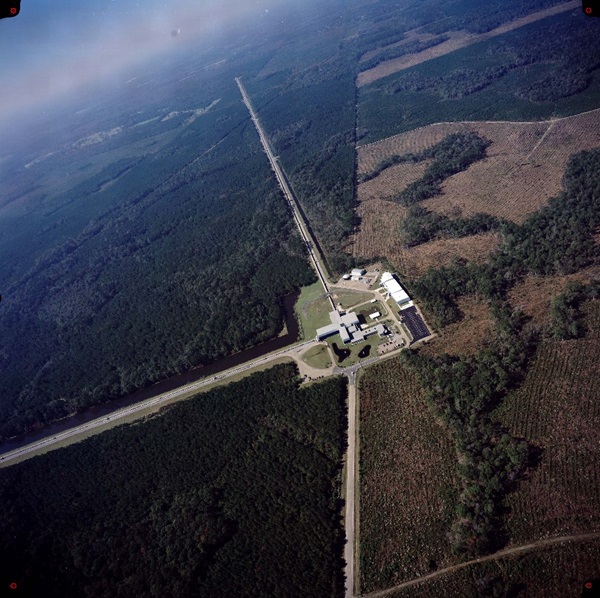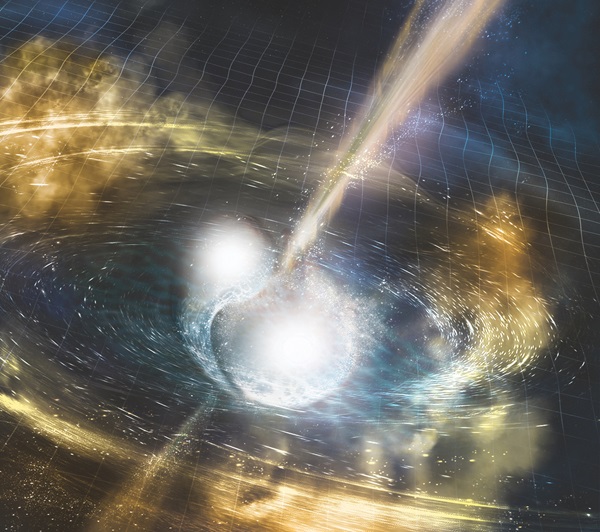Key Takeaways:
That was, until September 14, 2015, when American researchers got a call from their partners in Germany asking if the machines were not properly calibrated. A mere two days after firing up the first collaboration data run between LIGO and Virgo, a European interferometer near Pisa, Italy, the machines were gathering data that appeared to show that gravitational waves had been detected. The equipment was working just fine — and the first detection of gravitational waves was confirmed.
The detection was announced in February 2016. It was an incredible moment for astrophysicists. But the general population, however, wasn’t sure what this announcement meant.
LIGO’s initial success
Lisa Barsotti, now at the MIT Kavli Institute, was one of the researchers on this groundbreaking project. “When we first told people about it, pretty much nobody cared,” she says.
It’s an understandable sentiment without the proper context.
The gravitational wave detection came from a collision of two black holes millions of years ago. Detecting the energetic emission from that event was a revolutionary advance in science. LIGO was no longer an irrelevant project.
“Everything changed so fast. It went from nobody really caring about LIGO, to being a part of this huge experiment that everybody wanted to talk about,” Barsotti says.
The magnitude of this collision and the precision with which LIGO measured it at is the truly amazing aspect of this discovery. The equivalent of three times the mass of the sun was expelled in one-fifth of a second during the black hole merger. For perspective, in the last five billion years that the Sun has burned, it has lost only 0.03 percent of its mass.
That collision pushed out extreme amounts of energy in the form of gravitational waves — like the waves caused when a boulder splashes into a pond — that propagated through space for millions of years.
“When a gravitational wave passes through you, it will stretch you in one direction and squeeze you in the other. It’s like the perfect diet,” Barsotti laughs.
But by the time those waves reach us, their effects can be miniscule. The detectors at LIGO lit up when the waves passed through the 2.5-mile (4 kilometers) arms and shrunk them by 10-18 meters. That’s comparable the distance to the nearest star to Earth (4.37 light-years) changing by the width of a human hair.
The fact that LIGO’s detectors could pick up that signal was exciting enough for researchers.
“We found our way of being excited about what we were doing without thinking about the astrophysical implications,” Barsotti says. “The scale of what we were doing was so extreme was exciting, and I think that’s the biggest reason why we kept doing it.”
NASA’s Fermi Gamma-ray Space Telescope detected a weak gamma-ray burst starting just after the same event in the same region of the sky. The team contacted LIGO with their findings. Once the two camps were in agreement about their discovery, they teamed up to search for more data from this monumental event.
“At this point you see all the telescopes aiming at the same point in the sky, it’s amazing,” Barsotti says.
No additional data was acquired from the original event, however, and the novelty of this discovery wore off tragically quickly. In the remaining two months of the first observation trial, LIGO discovered two more black hole mergers, but they were similar events and provided no new significant data.
What’s next?
LIGO made a groundbreaking discovery and pushed the frontiers of astrophysical research, but soon was faced with a “now what?” feeling. Theory had always outpaced experimental capability until this point, and LIGO researchers were now wading into unfamiliar territory, which was a new feeling for them. But it seems they have now reached a technological limit. With great advancements in detection capability, new technologies make for promising prospects in this field.
“I think right now it’s a great place to be,” Barsotti says. “Every time LIGO and Virgo take data, we discover something new that’s one of a kind, and a few days afterwards there are many, many papers that are speculations, and it’s great for years.”
To continue making progress on this front, LIGO researchers have plans to improve their detectors.
Next, the team wants to “improve the detector’s current facilities and really push the limit of measurement and increase the length of the arms, as well as increase the vacuum system,” Barsotti says. “The next thing is to build better detectors”
Now that they know gravitational waves are out there to be found, LIGO researchers want to detect more of different types and wavelengths. Larger arms and more sensitive detection technology means being able to widen their frequency range, which will allow them to tap into more signals.
LIGO’s arms are currently 4km each, but the researchers hope to expand this tenfold to 40-kilometer arms.
“Together, with the combination of new technologies, we think will better allow us to pretty much see the entire gravitational wave universe. All of the [merging] black holes in the universe will be able to be seen,” Barsotti says.
Want to dig deeper into gravitational waves and general relativity? We’ve got you covered with our free downloadable eBook: A Century of Gravitational Waves.
Testing this theory out takes a variety of personalities.
“You can test theories in two ways: One way is that you can assume that general relativity is right and you can test that against your data. Doing it this way has pretty much shown that general relativity is correct in the ways that we can test,” she says.
Alternatively, a theorist can simply pick a theory that they like the best, and try to test it through the lens of their chosen hypothesis and see if it answers some questions better than the current theory of general relativity. Some researchers have worked out valid ways to poke holes in the theory of general relativity, but none have done so in a complete manner.
Pending the approval of funding for expanding LIGO’s experimental capabilities, researchers hope to close these gaps in knowledge to identify a more defined theory of general relativity and its relation to gravity and space-time. It’s safe to say that astronomy fans and researchers alike can get excited for a better understanding of the cosmos in the coming years.











